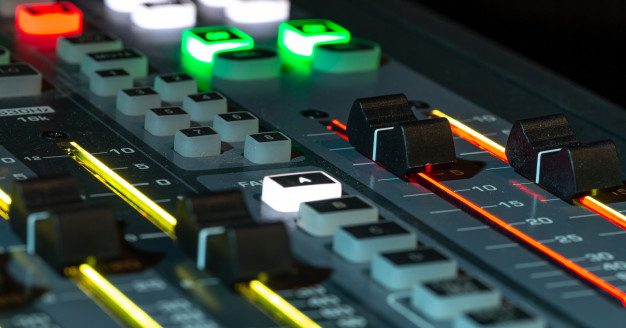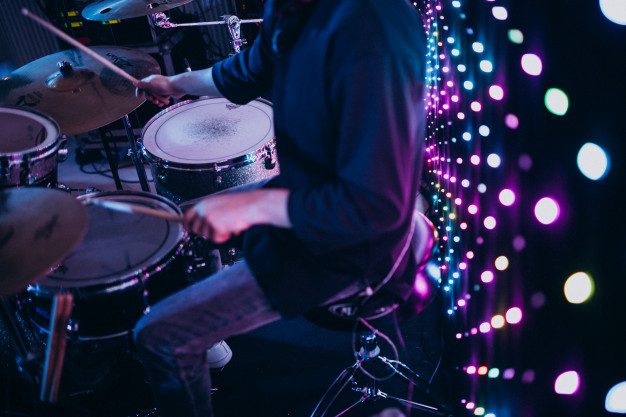Here is more knowledge about lo-fi music that helps you start making it.
Table of Contents
ToggleCommon lo-fi production techniques
Okay now comes the fun part.
The production side of lo-fi music is really what defines the genre.
Here are four basic production techniques that almost every lo-fi producer uses.
Tape saturation
Tape saturation is the most important effect that gives lo-fi its sonic qualities.
Really, you should keep reading a guide from LANDR on how tape machines work.
But in short, tape saturation is the most important effect that tape machines are still beloved for. In short, it’s the thing that happens as you add more audio to a tape.
Tape saturation is caused by the physical limitations of the cassette tape.
When you record many audios to tape it compounds subtle distortion, compression, phasing, small irregularities in pitch, roll-off of high and low frequencies, and general changes in resonance across the frequency spectrum to make a “saturated” effect.
Essentially, tape saturation is that thin, warbling sound you associate with lo-fi.
Of course, if you don’t need a tape machine to get a tape saturation effect, there are tons of tape saturation plugins out there that effectively emulate the effect of recording on a tape machine.
Sidechaining
The next production method you hear all the time in lo-fi music production is sidechaining.
You can jump into the way it works in one of LANDR’s previous articles, but the sonic effect is easy to explain.
Next time you listen to a lo-fi playlist, pay attention to a certain pulsing rhythmic effect that builds the entire track duck in volume every time the kick drum is struck—that’s sidechaining!
Essentially that’s what sidechain compression does—every time a specific sound occurs (in most cases a kick), the entire track ducks to make the kicks more audible adding a rhythmic element to the track.
You can easily learn the way to set up a sidechain effect in your DAW in case you follow this tutorial.
DAW swing
Like jazz, lo-fi music doesn’t strictly adhere to a grid-like understanding of rhythm like rock or electronic music.
Instead, notes are loose and slightly off-kilter.
In jazz, this rhythmic feel is called swing.
But lo-fi music isn’t swung exactly. Rhythms are instead played “in the cracks”—meaning the beat isn’t perfectly straight but nor is it perfectly swung.
This effect was pioneered by beat-making legend J Dilla, who learned the way to use his MPC to place notes off the rhythmic grid to create a rhythmic feel called MPC Swing.
Later, with the introduction of DAWs, the term became known as DAW swing.
With any DAW you can add the exact swing feel you want in your track. You can do it whether you want a classic MPC swing pattern or your own custom sewing pattern.
Adding DAW swing in your DAW is easy and we’ve written about it in-depth in other articles.
Lo-fi audio effects and lo-fi VSTs
People use a ton of audio effects to make Lo-fi music.
You’ll hear phaser, reverb, pitch bending, chorus, delay… the list goes on and on.
Getting acquainted with exactly what each audio effect does is a good way to pop your production skills up and improve your tracks.
We’ve written a lot about different ways to use audio effects in your music production, so dive into a play with some knobs!
And of course, there are tons of lo-fi VST plugins out there to help you hone your sound.
How to find lo-fi samples
Be careful when finding samples to use in your lo-fi tracks.
Sampling copyright is still a murky area and your tracks might get taken down in case you haven’t cleared your tracks before release.
Your best bet is to use royalty-free sample markets like LANDR Samples, where you can freely use any of the samples you download.
There is a long list of amazing lo-fi sample packs out there to sift through.
We guarantee you’ll find something amazing, especially because these sample packs are formatted to be easy to arrange, chopped, and crafted in your DAW.
Lo-fi music forever
Lo-fi is not a new music trend, it isn’t going away.
Just a simple YouTube search will provide you with tons of playlists that your tracks could be featured on.
There’s a huge community of lo-fi music lovers and creators out there. So, in case you feel called to write some lo-fi tracks there’s much support out there for you.
Get out there and start making your own lo-fi music to chill out to!


